Oh, how we love to crochet! We do it as often as we can, for hours on end!
But sometimes, our body suffers from our enthusiasm. Our fingers hurt, our shoulders tense up, and tendinitis makes it hard even to hold the hook.
How can we crochet without pain? I am not a doctor or a physiotherapist, but I have been crocheting a lot for decades – and I have 4 tips that I hope can help.
Please note that this is all about prevention. If the damage is done and you are already hurting, please see a doctor!
Manage your time
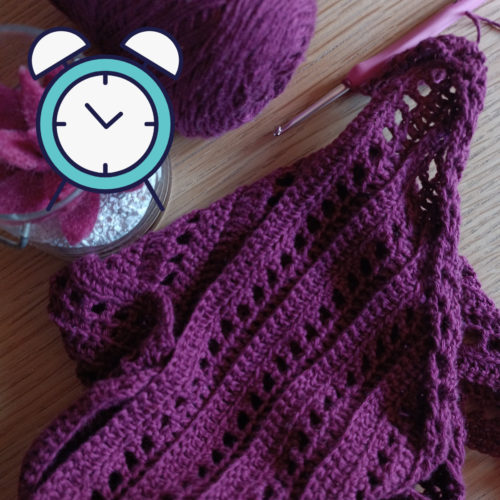
You’re back home from work, dinner is finished, and you can at last settle down and crochet for hours until you go to bed!
But that might not be such a great idea…
Crocheting means repeating the same, tiny movements over and over again. When you do this for hours on end, you can end up hurting a lot from repetitive strain injuries.
My tip: intervals. I suggest that you take regular breaks.
To help me remember to take breaks when I delve into a fascinating project, I use a timer. When it goes off, I put down my hook and go do something else for a little while.
How long you can crochet and how long your pause should be depend, of course, on your specific situation.
I personally try not to crochet for more than 45 minutes at a time, and then take a break for at least 15 minutes. This enables me to continue crocheting after the break without injury.
Of course, it is frustrating to have to stop, but I tell myself that in the end, this enables me to crochet more. Crocheting in intervals means that I no longer have to refrain from crocheting for days or weeks because of tendinitis.
Manage your posture
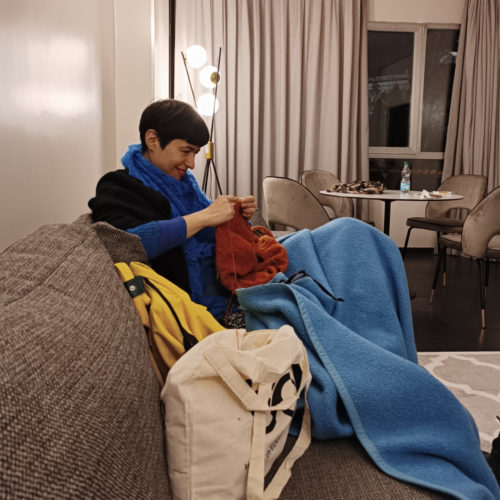
How are you sitting while you crochet? Slouching on the couch? With your shoulders pulled up to your ears and your work right under your nose?
Take notice of your posture, and modify it according to the needs you observe. Perhaps the slightly firmer armchair will be better. And perhaps your back will get better support if you simply slide a cushion behind it.
When you concentrate on your stitches, it’s so easy to tense up, tighten your shoulders and bring your work close to your eyes. When you do this for a long time, you put a lot of tension on your muscles. Try to remember to lower your shoulders and relax your arms.
I’m nearsighted, and I often find myself holding the work very close to my eyes. When I deliberately lower my hands, I almost always realize that I can see my stitches perfectly well even with my work on my lap.
If your hands, arms and shoulders feel tense, it might be a good idea to use your break (when that timer goes off!) to massage yourself and do some stretching. You don’t necessarily need to do anything very complicated or specific, but if you want to dive a bit further into this, there are plenty of exercises to be found with a simple search on the Internet.
Manage your activities
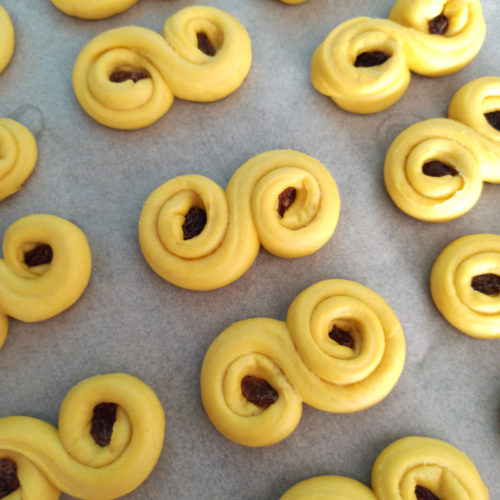
Always making the same, small movements puts a lot of strain on our muscles, joints and tendons. So, having lots of hobbies is a good thing!
Do you have something else you love to do? Knitting, sewing, baking, woodworking? Changing activity to do something else means that some parts of your body will get a well-deserved break, while you stay creative.
You can also vary your crochet projects. Working with a big hook is fun and gets quick results – but it can also be quite a strain on your hands. If I have an ongoing project using a 6 mm (US J-10) hook or bigger, I try to also have one going with a 3 to 3.5 mm (US D or E-4) hook. I find that using the smaller hook is more comfortable – it might be the opposite for you!.
Manage your hands
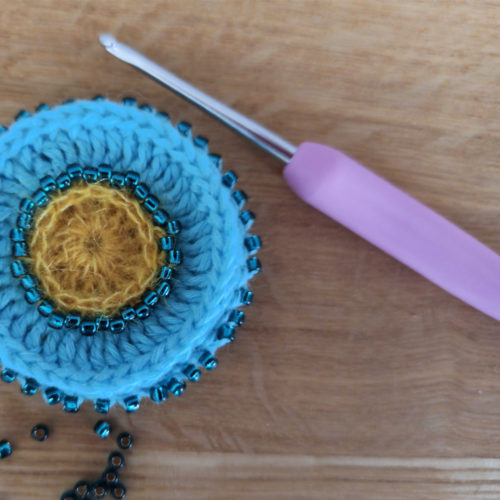
Once more, it’s time to have a good look at ourselves!
Let’s start with the tools – what kind of hook do you use? A thin metal hook, or one with an ergonomic handle? I find that the latter puts far less strain on your hands.
There are many brands and shapes of ergonomic hooks. At the moment, the ones I find the most comfortable are the Tulip hooks – they are also the ones I sell in my shop.
The material of the hook itself also matters. There are hooks in metal, wood, plastic…. Perhaps you will find that warm wood or lightweight plastic is exactly what you need.
Changing hooks is not too complicated. However, the way you hold your hands also counts.
For example, how do you tension your yarn? Do you pull with your index finger, lift your little finger or weave the yarn around all your fingers? There are so many ways to do this. We tend to always use the same method, but it can be very useful to try another one.
Changing the way you tension your yarn isn’t easy, but I think that it’s even harder to change the way you hold your hook. Nevertheless, that’s what I’ve done.
Like many crocheters in Europe, I learned to hold my hook as I hold a pen, and I crocheted in this way for many, many years. One day, I had to face the facts: if I crocheted for more than 15 minutes, my hands started to hurt intensely. I realized that I had a choice to make: change the way I hold my hook, or not be able to crochet at all.
It was very hard for me, in the beginning, to hold my hook like a knife. This is what is natural for many crocheters in the US and for people doing Tunisian crochet. But I felt extremely clumsy, as if I were just learning to crochet – a very uncomfortable situation for an experienced crocheter like me.
I kept working on it and managed to change how I hold my hook. At first, it was slow, uneven and, honestly, very frustrating. But it was worth the while. Today, I can crochet without pain.
So, there you have my 4 tips:
- – manage your time
- – manage your posture
- – manage your activities
- – manage your hands
How about you? Do you have any ideas on how to make crocheting more comfortable or more ergonomic? Or do you have a specific problem when you crochet? Let me know in the comments!

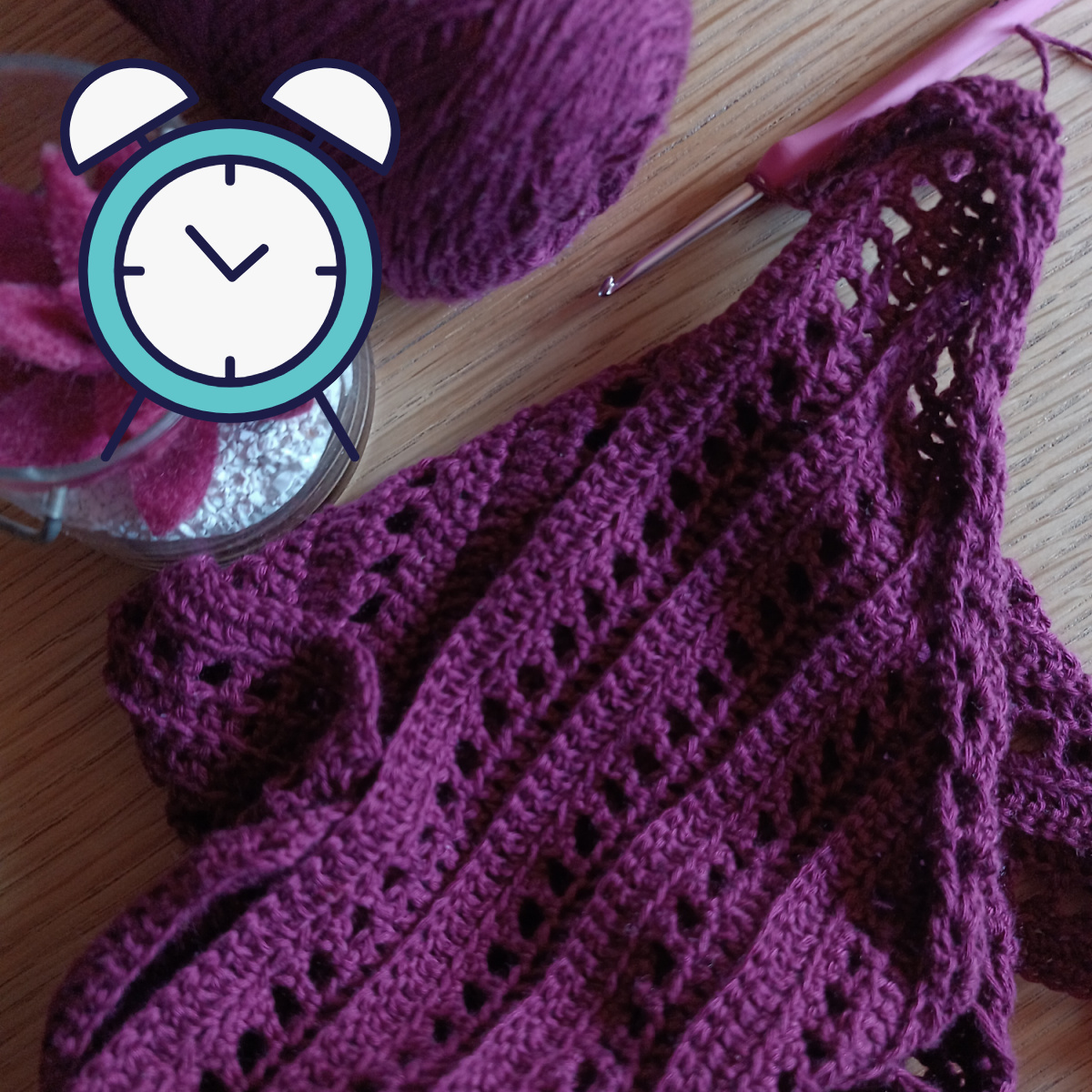
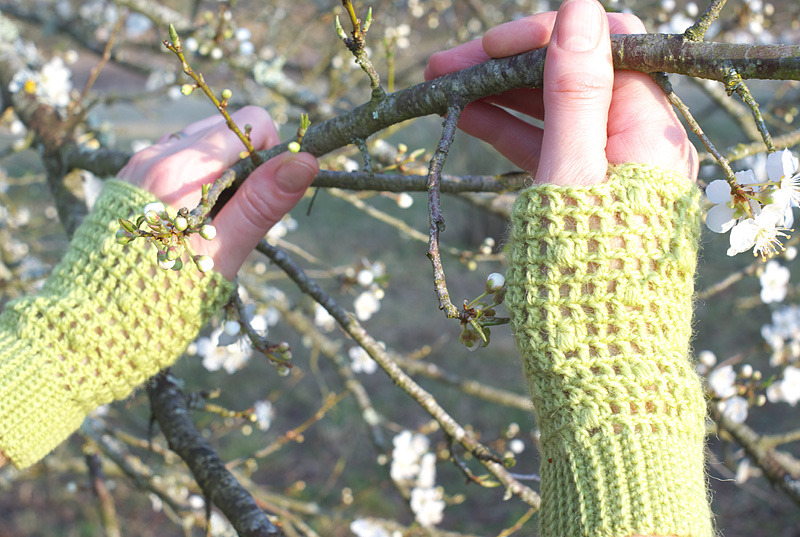
Holding the yarn is a problem as I have MS and my hands have deteriorated. I have to wind the yarn around my hand to get the tension on the yarn. Also, I can’t crochet for long.
Thank you so much for sharing, Cath.
With illness or age, we need to adapt. So very true.
Great article, Annette! I agree with everything. I tend to follow this too, and when my fingers begin to ache, I stop to analyse which one(s), why, and what the triggering movement is. Then I try to relax the concerned part while crocheting/knitting and use a different hold or movement that doesn’t bring on the pain. That helps 🙂
Thank you so much for weighing in, Padma, that’s really helpful!